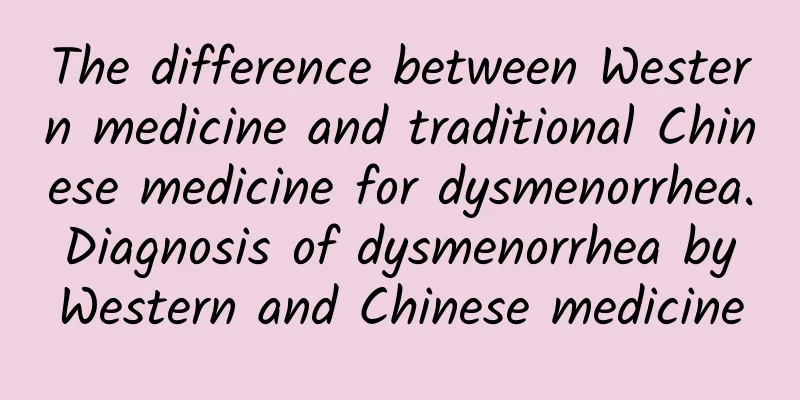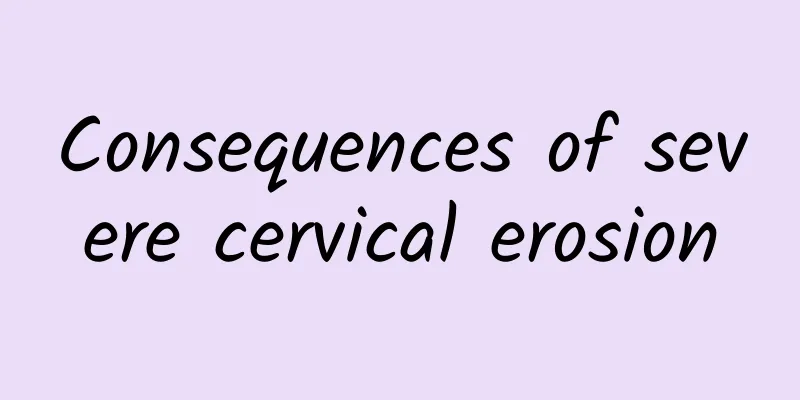The difference between Western medicine and traditional Chinese medicine for dysmenorrhea. Diagnosis of dysmenorrhea by Western and Chinese medicine

|
How to see dysmenorrhea? Differences between Western medicine and traditional Chinese medicine. Diagnosis of dysmenorrhea in both Chinese and Western medicine Dysmenorrhea is one of the common problems many women experience during menstruation. Whenever menstruation comes, some women may experience abdominal pain, back pain, and other uncomfortable symptoms, and some may even be unable to work and study normally due to dysmenorrhea. In order to find a suitable treatment plan, many women will choose to see Western medicine and traditional Chinese medicine institutions. So, how do you see the difference between Western medicine and traditional Chinese medicine for dysmenorrhea? This article will introduce you to the differences in the diagnosis methods and treatment plans of dysmenorrhea in Western medicine and traditional Chinese medicine. 1. Western medicine diagnosis In Western medicine, the doctor will ask about the patient's medical and family history in detail, conduct a comprehensive physical examination, and may perform relevant laboratory tests. Western medicine mainly diagnoses dysmenorrhea by excluding other possible causes, such as endometriosis, uterine fibroids, or ovarian cysts. 1. Endometriosis Endometriosis is a common cause of dysmenorrhea. Western medicine usually diagnoses the disease by performing an abdominal or pelvic ultrasound and taking a medical history. If ectopic endometrium is suspected, the doctor may recommend laparoscopy to confirm the diagnosis. 2. Uterine fibroids Uterine fibroids are also one of the causes of dysmenorrhea. Western medicine usually uses ultrasound examination to determine the location, size and number of uterine fibroids. Depending on the condition of the lesion, the doctor may take surgery, drug treatment or other appropriate methods. 2. TCM Diagnosis In traditional Chinese medicine, dysmenorrhea is considered a manifestation of qi stagnation and blood stasis. Traditional Chinese medicine advocates adjusting the functions of internal organs and promoting the smooth flow of qi and blood to achieve therapeutic effects. 1. Qi stagnation and blood stasis Qi stagnation and blood stasis is one of the basic concepts in TCM diagnosis. TCM believes that dysmenorrhea is caused by ovarian dysfunction, which leads to poor circulation of Qi and blood, resulting in symptoms such as abdominal pain during menstruation. TCM physicians use the four diagnostic methods of observation, auscultation, questioning, and palpation to determine the degree of Qi stagnation and blood stasis according to the patient's specific situation. 2. Massage and Chinese medicine treatment Based on the diagnosis, the TCM physician may prescribe appropriate Chinese medicine prescriptions to regulate Qi and blood, and to activate blood circulation and remove blood stasis. In addition, massage is also widely used to treat dysmenorrhea. By adjusting the acupuncture points on the abdomen and waist, massage helps improve menstrual blood circulation and relieve dysmenorrhea symptoms. There are many differences between Western medicine and traditional Chinese medicine in terms of how to view dysmenorrhea, but in general, Western medicine diagnosis mainly relies on laboratory tests and physical examinations to determine the cause of the disease, while traditional Chinese medicine focuses more on judging the patient's physical constitution and pathological condition through the four examinations in order to provide personalized treatment plans. Western medicine and traditional Chinese medicine have different methods and concepts in the diagnosis and treatment of dysmenorrhea. Western medicine mainly determines the cause of dysmenorrhea by excluding other potential causes, while traditional Chinese medicine treats dysmenorrhea by observing the patient's constitution as a whole and adjusting the flow of qi and blood. The combined application of Western and traditional Chinese medicine methods can provide a more comprehensive understanding of the cause of dysmenorrhea and achieve better treatment results. No matter which treatment method is chosen, it should be carried out under the guidance of a professional doctor and regular follow-up visits should be made to ensure the treatment effect. |
<<: How can yoga during dysmenorrhea quickly discharge blood stasis? Can yoga relieve dysmenorrhea?
>>: Which department or clinic should I go to for abortion? Does abortion require family signature?
Recommend
How do women get chronic cervicitis? How should women with chronic cervicitis be treated?
Although chronic cervicitis is a very common dise...
What are the classifications of multiple uterine fibroids? What is the best examination for multiple uterine fibroids?
Classification of multiple uterine fibroids origi...
Daily care for endometrial tuberculosis
How should endometrial tuberculosis be cared for?...
How to regulate irregular menstruation for women? Teach you how to choose Chinese medicine to treat irregular menstruation
Ms. Yan, 30, has felt irregular menstruation in r...
Choosing a good hospital for abortion
Pregnancy is a very happy thing for every woman. ...
Mid-Autumn Festival turns into "swollen" autumn festival? Be careful of nutritional imbalance when eating barbecue and mooncakes. "Ginseng" can help you improve your protection!
The Mid-Autumn Festival holiday is here, and moon...
Why do women have irregular menstruation? 4 reasons for irregular menstruation that women must know
Causes of irregular menstruation Some women exper...
Experts explain what cervical hypertrophy is
Cervical hypertrophy is a relatively common gynec...
Brief introduction to common early symptoms of ectopic pregnancy
It is very important for patients with ectopic pr...
What are the symptoms of vulvar leukoplakia that are more common in older women?
Female vulvar leukoplakia is a common gynecologic...
Prevention and treatment of diseases in menopausal women
As my country's social economy develops, mate...
What are the hazards of cervical erosion to women?
What are the hazards of cervical erosion to women...
What precautions should be taken in daily life regarding cervical hypertrophy?
What precautions should be taken in daily life fo...
Causes of secondary dysmenorrhea
Causes of secondary dysmenorrhea: In fact, many w...
What symptoms do women have before menopause?
Generally speaking, in our country, the average a...









